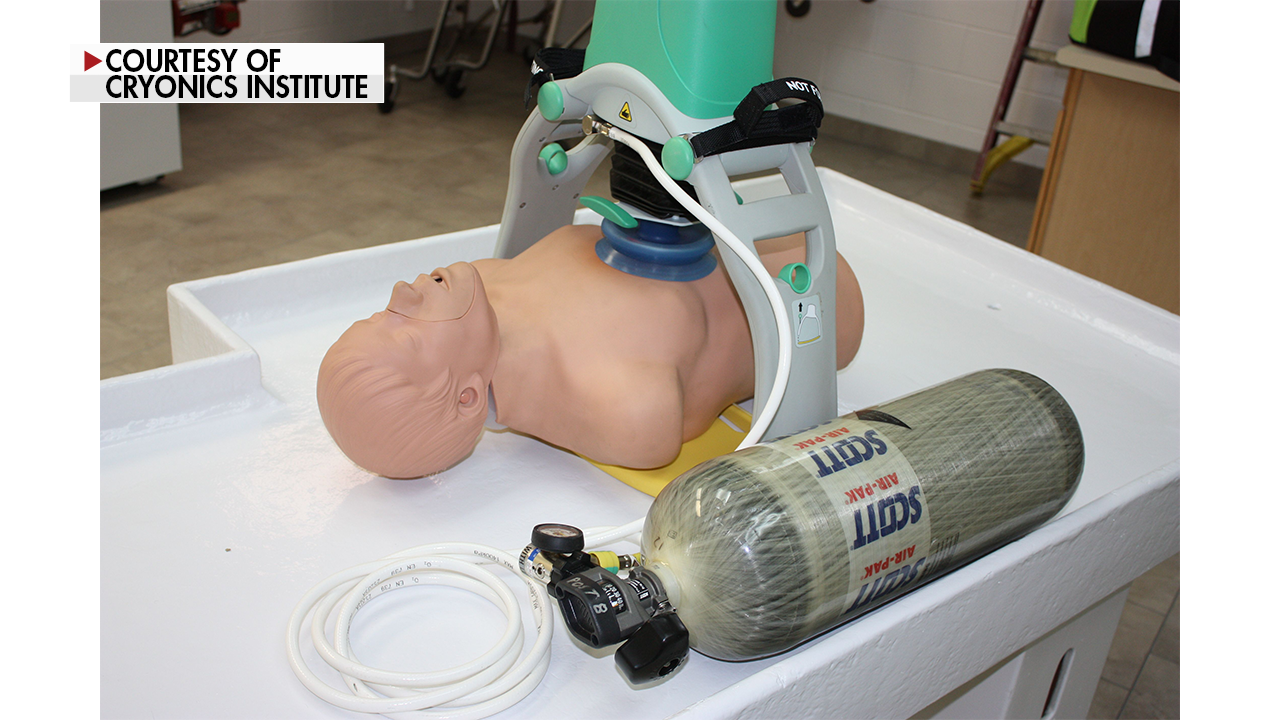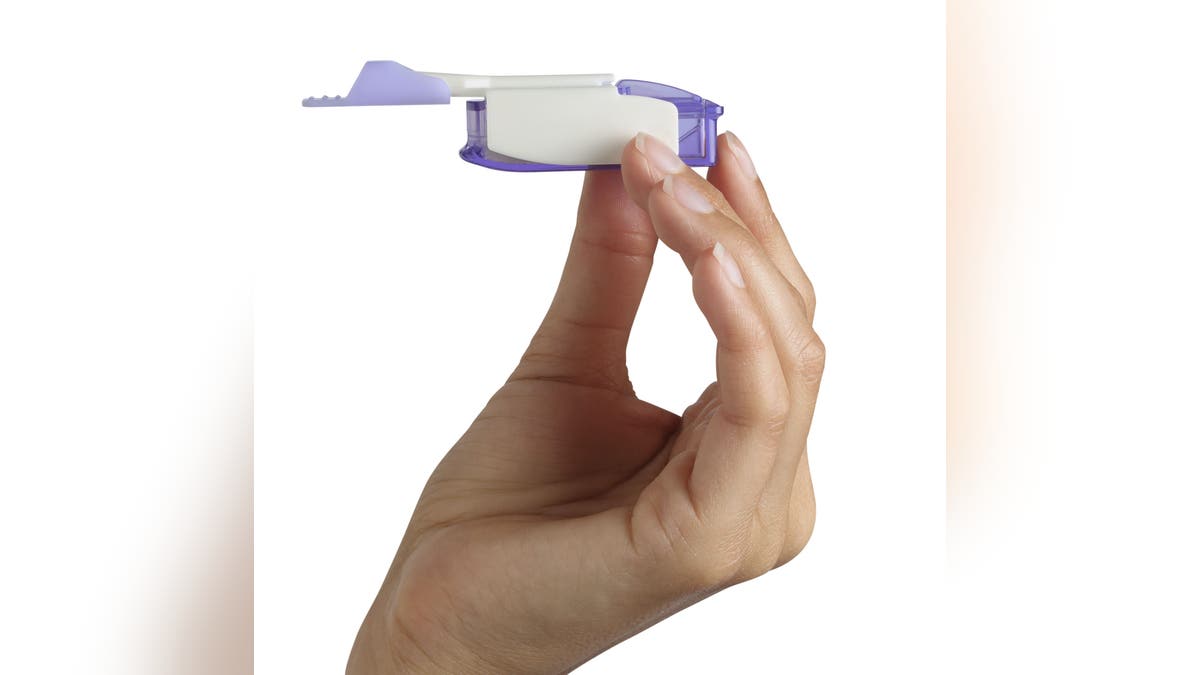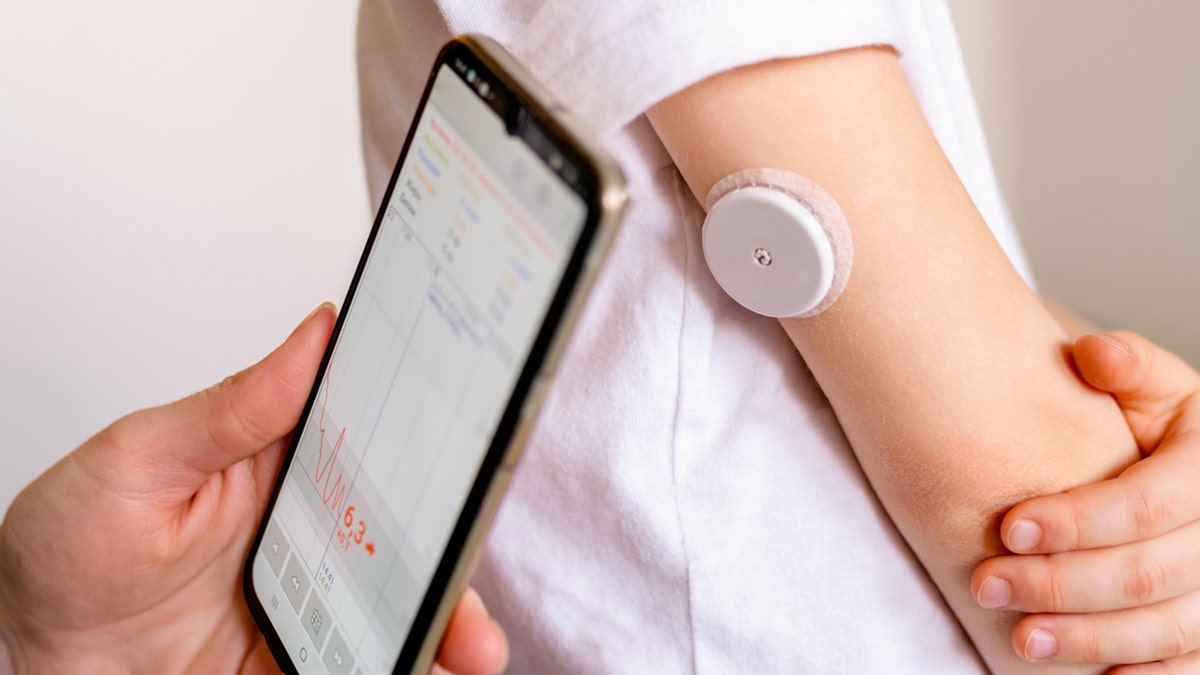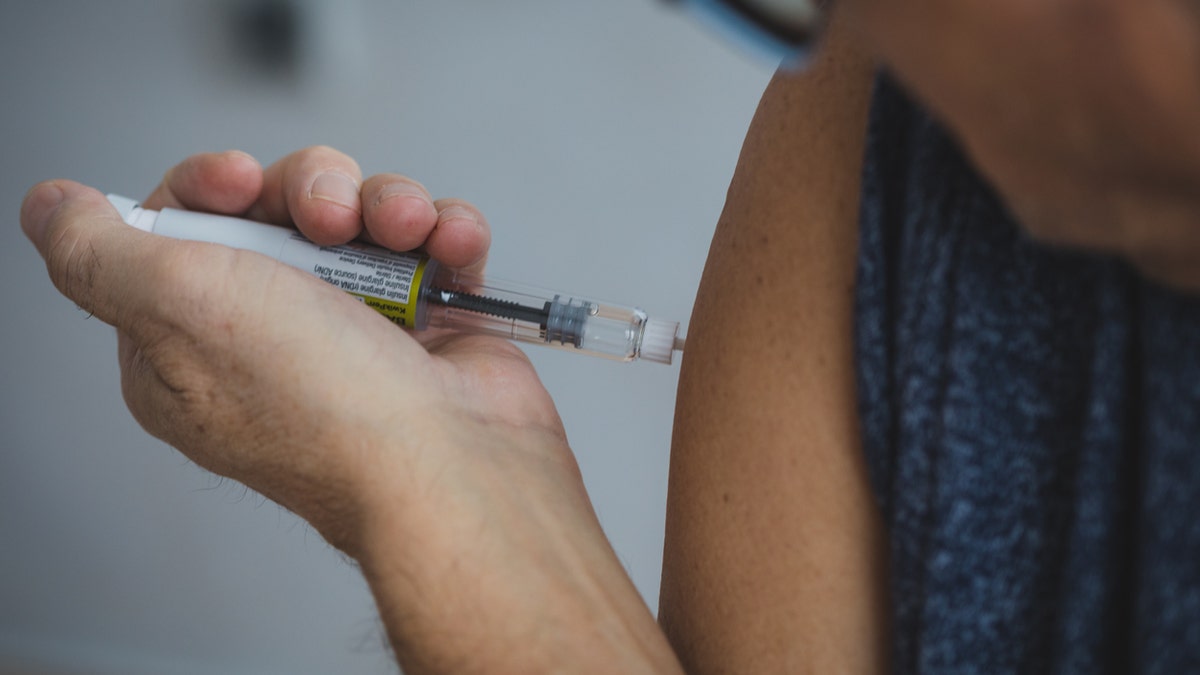Health
Greater numbers of women are dying of alcohol-related conditions, study finds

A rising number of women are succumbing to alcohol-related deaths, a new study published in JAMA Network on July 28 found.
While males historically have been more than twice as likely to die from alcohol-related conditions than females, the gap appears to be narrowing.
Researchers from Hofstra University in New York, Harvard Medical School and the University of South Carolina analyzed nearly 606,000 deaths linked to alcohol between 1999 and 2020, based on Centers for Disease Control and Prevention (CDC) data.
DRINKING A LITTLE ALCOHOL EVERY DAY WON’T HELP YOU LIVE LONGER, SAYS NEW STUDY
Mortality has been rising for both genders, but the spike has been sharper among females.
Men’s mortality rate increased by 12.5% between 2018 and 2020, while the rate among women increased by 14.7%, the researchers found.
The most prominent increase was seen in the last three years of the study.
A rising number of women are succumbing to alcohol-related deaths, a new study published in JAMA Network on July 28 found. (iStock)
The higher mortality increase among females remained even after excluding data from the first year of the pandemic, the researchers noted.
“This finding is concerning because women experience greater health consequences from drinking alcohol compared to men,” Dr. Shana Johnson, a physical medicine and rehabilitation physician in Scottsdale, Arizona, told Fox News Digital.
Johnson was not involved in the study.
TEENAGE BINGE-DRINKING: WHY IT’S SO DANGEROUS FOR YOUNG PEOPLE TO OVERINDULGE IN ALCOHOL
The deaths were linked to alcohol-related poisoning, gastritis, cardiomyopathy, myopathy, liver disease, polyneuropathy and pseudo-Cushing syndrome, among others, according to the journal article.
“Women are now drinking alcohol at higher amounts and frequencies than in the past.”
“The changing patterns of alcohol consumption among women are an important consideration in understanding these trends,” the study authors wrote in a discussion of the findings.
“Women are now drinking alcohol at higher amounts and frequencies than in the past, likely due to the normalization of alcohol use for female individuals in society.”

One potential reason for the uptick in drinking rates among women is a rise in stress levels and stress-related disorders in recent years, researchers said. (iStock)
One potential reason for the uptick in drinking rates among women is a rise in stress levels and stress-related disorders in recent years, the researchers said.
“Stress plays a major role in the development and maintenance of disordered drinking,” Johnson said.
“It is not a big leap to look at soaring food and housing costs and think that chronic stress is taking its toll in the form of increased alcohol use to cope with today’s hardships.”
‘GIRL DINNERS’ SOCIAL MEDIA TREND SPARKS CONCERN AMONG EXPERTS: ‘UNHEALTHY OBSESSION’
Physical factors contributing to the larger mortality risk among women is the fact that they tend to have a higher percentage of body fat and a lower percentage of body water compared to men, the study authors wrote, “resulting in higher alcohol blood concentrations and potentially increasing vulnerability to complications.”
Additional factors include hormonal fluctuations, slower alcohol metabolism, higher susceptibility to physiological and organ damage, and greater risk of liver diseases, circulatory disorders and breast cancer.
Study had limitations, researchers noted
This research did not explore the specific factors that could have contributed to alcohol-related deaths, nor did it fully examine trends among specific age groups, the study authors wrote.
Also, the study did not take into account historical or generational factors.

The deaths were linked to alcohol-related poisoning, gastritis, cardiomyopathy, myopathy, liver disease, polyneuropathy and pseudo-Cushing syndrome, among others, according to the journal article. (iStock)
There was also not enough mortality data for females between ages 15 and 24 to establish a trend for that age group.
Earlier this year, the World Health Organization (WHO) released a statement that there is no safe amount of alcohol consumption.
CLICK HERE TO SIGN UP FOR OUR HEALTH NEWSLETTER
“Alcohol is a toxic, psychoactive and dependence-producing substance,” the WHO wrote.
“Alcohol causes at least seven types of cancer, including the most common cancer types, such as bowel cancer and female breast cancer.”
Alcohol is the fourth-leading preventable cause of mortality in the U.S., leading to more than 140,000 deaths each year — approximately 97,000 men and 43,000 women — according to the National Institute on Alcohol Abuse and Alcoholism.

Health
Life after death: Take a glimpse into the world of cryonics

Since the age of 13, Joseph Kowalsky has harbored a fascination with life after death, pondering ways to extend his existence indefinitely.
Today, Kowalsky, now 59, is among some 2,000 individuals who have signed up with the Cryonics Institute in Clinton Township, Michigan, betting on a future where death is not the end.
Chilling prospect of immortality
Cryonics, the process at the heart of Kowalsky’s hopes, involves preserving human bodies at ultra-low temperatures in the anticipation that future science will one day revive them.
MEN’S ENERGY AND VITALITY PLUMMETS FOR 6 REASONS. BOOST IT BACK UP THIS WAY
Shortly after a person dies, organizations like the Cryonics Institute use a heart-lung resuscitator, circulate a medical-grade antifreeze in the blood and suspend the body in aluminum pods filled with liquid nitrogen.
Dennis Kowalski, current president of the Cryonics Institute (and no relation to Joseph Kowalsky), told Fox News that over 250 individuals are currently in “suspension” at the Michigan facility.
Cryonics involves preserving human bodies at ultra-low temperatures in the anticipation that future science will one day revive them. (Cryonics Institute)
Could defying death be affordable?
The Cryonics Institute is just one player in a burgeoning industry.
Alcor, the world’s oldest cryonics company, which is based in Scottsdale, Arizona, boasts a state-of-the-art facility where more than 200 individuals are preserved.
MEDITERRANEAN DIET COULD HELP WOMEN LIVE LONGER, HARVARD STUDY FINDS
For those opting for whole-body preservation, the price tag is $200,000, while brain-only preservation costs $80,000.
Alcor CEO James Arrowood dispels the notion that cryonics is solely for the wealthy, highlighting that many clients use life insurance policies to cover costs.

Over 250 individuals are currently in “suspension” at the Michigan facility, the president of the Cryonics Institute told Fox News. (Cryonics Institute)
“About 80% of people who sign up are middle-class,” Arrowood told Fox News.
He pointed out that the clientele includes notable figures such as baseball legend Ted Williams, whose head and body were cryopreserved separately.
Skeptics cast doubt
Critics dismiss cryonics as speculative and unproven, labeling it an “iceberg scheme” lacking scientific backing.
CLICK HERE TO SIGN UP FOR OUR HEALTH NEWSLETTER
“It’s a sad case of people being beguiled by a very understandable dream of resurrection,” Clive Coen of King’s College London told Fox News.
The neuroscience professor raised concerns over the damage inflicted during the preservation and revival process, warning that “there will be billions of mini-strokes in every millimeter of brain tissue” due to the inability of antifreeze to traverse the brain’s complex landscape.
Hope springs eternal for death defiers
There is currently no scientific evidence or successful case of a human being revived from a cryonically preserved state.

For those opting for whole-body preservation, the price tag is $200,000, while brain-only preservation costs $80,000. (Cryonics Institute)
Despite the skepticism, Joseph Kowalsky, who formerly worked with the Cryonics Institute, remains undeterred.
“Worst-case scenario, I’m still dead … And the upside? It could be a potentially life-saving medical technique,” he said.
For more Health articles, visit www.foxnews/health
As science and ethics continue to grapple with the implications of cryonics, individuals like Kowalsky illustrate a deep-seated hope for defying mortality, one frozen body at a time.
Andres del Aguila and Griff Jenkins contributed to this report.
Health
The Carnivore Diet: Is There Science Behind the Fad? | Woman's World

Sign Up
Create a free account to access exclusive content, play games, solve puzzles, test your pop-culture knowledge and receive special offers.
Already have an account? Login
Forgot your password?
Get back to the Sign In
Use left and right arrow keys to navigate between menu items.
Use escape to exit the menu.
Health
For diabetes patients, inhaled insulin is shown just as effective as injections and pumps

Most of the 38 million people living with diabetes in the U.S. use daily injections or insulin pumps to keep glucose at safe levels — but new research suggests that a third option could be just as effective.
In a study led by Dr. Irl B. Hirsch, M.D., medical director of the Diabetes Care Center of the University of Washington Medical Center, an inhaled form of insulin — similar to an asthma inhaler — worked just as well as injections or pumps to control type 1 diabetes.
The research was presented last week at the American Diabetes Association (ADA)’s 84th Scientific Sessions in Orlando, Florida.
EATING YOGURT COULD HELP PREVENT ONE COMMON DISEASE, ACCORDING TO THE FDA
The clinical trial tested a product called Afrezza, an inhaled insulin made by MannKind Corporation in California.
Afrezza, the only inhaled insulin on the market, has been available since getting FDA approval in June 2014.
An inhaled form of insulin worked just as well as injections or pumps to control type 1 diabetes in a recent study. (iStock/MannKind)
Benefits of a third option
“In those with type 1 diabetes, insulin is required for survival,” Hirsch told Fox News Digital in an interview.
“With continuous glucose sensing, glucose control has been dramatically improved — but not everyone reaches the target with multiple injections or pumps, and there are many pros and cons with each therapy,” he said.
EATING ONE TYPE OF FRUIT REGULARLY COULD REDUCE DIABETES RISK IN WOMEN, STUDY SUGGESTS: ‘INCREDIBLY HEALTHY’
With pumps, people must wear the device, which can lead to skin problems.
They also have to purchase extra accessories.
Blood glucose levels can also drop with exercise, Hirsch warned, which can be problematic.

Afrezza, an inhaled insulin pictured here, is made by MannKind Corporation in California. (MannKind)
“Injections overall can be more convenient for some, but they don’t do as well as pump patients,” he said.
With Afrezza, the product is inhaled into the lungs before meals, and the fast-acting insulin minimizes the glucose spike often seen after eating, Hirsch noted.
“Patients with type 1 diabetes should consider this as another option for their mealtime insulin, and talk to their doctor about this choice.”
During the 17-week study, researchers evaluated the results of 141 adults who were assigned to either use the Afrezza inhaler or continue with traditional methods of injection or pump delivery.
At the 17-week mark, all participants switched to the inhaler for another 13 weeks.

Dr. Irl B. Hirsch, M.D., medical director of the Diabetes Care Center of the University of Washington Medical Center, led the new study. (MannKind)
All groups were assessed with continuous glucose monitoring at the start of the study, at 17 weeks and again at 30 weeks.
Among the inhaled insulin group, 30% of participants reached their target glucose levels (less than 7% blood sugar) compared to 17% of the people using injections and pumps.
There was no difference in hypoglycemia (low blood sugar) between the groups.
UTAH MOM FIGHTS FOR HER DAUGHTER’S ACCESS TO DISCONTINUED DIABETES MEDICATION: ‘LIFE-SAVING’
“In general, there was no difference in our primary endpoint, HbA1c, a reflection of average blood sugar,” Hirsch said.
“But that alone is misleading — many patients did better with their glucose control, while others did worse.”

With Afrezza, the product is inhaled into the lungs before meals, and the fast-acting insulin minimizes the glucose spike often seen after eating, a doctor said. (MannKind)
“The point is, inhaling insulin isn’t for everyone, but some did better than they did on their pumps.”
The people who saw the best results inhaled insulin between meals and at bedtime, Hirsch added.
At the end of the study, more than half of the participants said they would opt to stay on the inhaled insulin therapy.
“The biggest takeaway is that patients with type 1 diabetes should consider this as another option for their mealtime insulin, and talk to their doctor about this choice,” he recommended.
‘Adds value’
The American Diabetes Association acknowledged the promise of the study findings in an email to Fox News Digital.
“We look forward to our Scientific Sessions every year to see data like the INHALE-3 study’s findings, which have the potential to expand diabetes care,” Raveendhara Bannuru, M.D., PhD, the ADA’s vice president of medical affairs and quality improvement outcomes in Boston, Massachusetts, told Fox News Digital via email.

“With continuous glucose sensing, glucose control has been dramatically improved,” a doctor told Fox News Digital. (iStock)
“We are hopeful for the continuous development of alternative insulin delivery methods that could offer options for people living with diabetes,” the group also said in the statement.
“The INHALE-3 trial demonstrated that inhaled insulin, combined with insulin degludec, effectively reduces A1c levels without increasing hypoglycemia or weight gain in people with type 1 diabetes. This adds value to the options in insulin therapy.”
Potential risks and limitations
While more people met their glycemic targets with Afrezza, some subjects saw worse readings when switching from usual methods to inhaled insulin — “potentially due to missing doses of inhaled insulin during the day and/or underdosing going into bedtime,” the researchers wrote.
CLICK HERE TO SIGN UP FOR OUR HEALTH NEWSLETTER
“We didn’t see any concerns,” Hirsch said when asked about side effects.
“As expected, a few people coughed immediately when dosing their insulin, but no major concerns were seen and everyone continued on their inhaled insulin.”

“Not everyone reaches the target with multiple injections or pumps, and there are many pros and cons with each therapy,” a doctor said. (iStock)
The most common side effects noted in the study were hypoglycemia, cough and throat pain or irritation.
Afrezza has been linked to a risk of acute bronchospasm in patients with chronic lung disease, such as asthma or COPD, according to the manufacturer.
“Inhaling insulin isn’t for everyone, but some did better than they did on their pumps.”
Before starting Afrezza, patients should see a doctor for a physical examination and testing to measure lung function.
Patients who smoke or who recently quit smoking should not take the inhaled medication.
For more Health articles, visit www.foxnews/health
Fox News Digital reached out to MannKind requesting additional comment.
-

 News1 week ago
News1 week agoJoe Biden, Barack Obama And Jimmy Kimmel Warn Of Another Donald Trump Term; Star-Filled L.A. Fundraiser Expected To Raise At Least $30 Million — Update
-

 News1 week ago
News1 week agoIt's easy to believe young voters could back Trump at young conservative conference
-

 World1 week ago
World1 week agoRussia-Ukraine war: List of key events, day 842
-

 World1 week ago
World1 week agoSwiss summit demands 'territorial integrity' of Ukraine
-

 World1 week ago
World1 week agoProtesters in Brussels march against right-wing ideology
-

 News1 week ago
News1 week agoA fast-moving wildfire spreads north of Los Angeles, forcing evacuations
-

 World1 week ago
World1 week agoAl-Qaeda affiliate claims responsibility for June attack in Burkina Faso
-

 Politics1 week ago
Politics1 week agoJudge rules Missouri abortion ban did not aim to impose lawmakers' religious views on others















